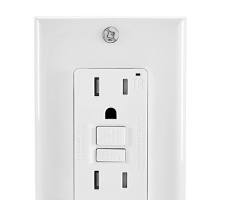Urban landscape design impacts daily lives by improving physical health, decreasing stress levels, and beautifying cities. It takes into account how natural ecosystems look and function within cities.
Traditional urban landscape design methods involve solid model and rendering model approaches, each having its own set of disadvantages – lack of three-dimensional sense and inability to observe an entire city from human perspectives being among them.
Table of contents
Formal Planning
Urban landscape design plays an integral role in how cities operate, making cities look beautiful while simultaneously improving how they function.
An effectively planned city landscape can help reduce air pollution, limit soil erosion, manage stormwater efficiently, provide energy savings, attract tourists, and strengthen local economies.
Urban landscapes can also improve human health by encouraging physical fitness and mental wellness. Studies demonstrate how spending time outside can reduce stress levels, help ease asthma or other respiratory conditions, and even lower blood pressure.
Urban designers can promote biodiversity through city landscape design by protecting or creating wildlife habitats in urban areas. Green belts, parks, streams, wetlands, coastal dunes, and other natural features should all be integrated into city architecture to facilitate this goal.
Site Survey
Urban landscape design goes beyond simply making city streets enjoyable to navigate; it plays a critical role in how cities operate. Every element, from colorful flowers lining sidewalks to strategically placed trees providing shade and mitigating soil erosion, must serve its own specific purpose when considering site planning for an effective city environment.
Green spaces contribute to urban biodiversity by offering shelter to native plants and animals, as well as helping reduce air pollutants while simultaneously collecting stormwater runoff and harmful runoff runoff.
Create the appropriate landscape design to reduce the heat island effect. This occurs when impervious surfaces absorb and radiate excessive heat for extended periods, often with adverse environmental consequences. Landscape designers employ various resources to identify effective strategies to combat this problem; usually conducting an in-depth site survey to understand ecological features and regional specifics in each location they explore.
Design Concepts
Urban landscape designers must take into account multiple factors when creating their plans. Working alongside architects, surveyors, engineers, horticulturists, and conservationists they aim to design spaces that address problems while improving natural surroundings and making spaces usable by both humans and wildlife alike.
Landscapers also take aesthetic qualities into account and select an eye-catching focal point for an area, which could include anything from an ornate fountain, riverfront boardwalk, famous landmark, or monument to evergreen trees and spring-blooming flowers.
Landscapers must be mindful of seasonal weather changes when designing gardens incorporating seasonal weather-appropriate plants that bloom throughout the year such as evergreen trees or flowers that bloom in springtime – and take them into account when selecting their designs.
Once the formal planning process is completed, design concepts can take shape. They will outline all aspects of the landscape such as property borders, utility installations, and fences.
Element Restrictions
Urban landscape design requires careful consideration of space, zoning laws, and city resources – taking these considerations into account can lead to practical designs that are sustainable and safe.
Urban landscaping can offer many environmental advantages, including providing shade and reducing air pollutants such as dust, smoke, and carbon dioxide emissions by up to 24% [source: The Nature Conservancy]. Trees have been found to significantly cut these pollution levels when planted [source: The Nature Conservancy].
Cities that provide public green spaces and walkways foster a sense of community among their residents, leading to lower crime rates, improved neighbor interactions, and overall improved health outcomes.
Landscape architects can play an invaluable role in protecting a city’s natural ecosystem by designing wildlife habitats, waterways, wetlands, parks, and coastal dunes as part of its natural setting.
Furthermore, landscape architects may promote environmental stewardship with zero-litter initiatives or volunteer cleanup programs aimed at eliminating litter altogether; or sustainably gardening practices in private residences for extended plant and tree lives.
Finalizing the Design
Urban landscape design integrates aesthetics and functionality to create outdoor spaces that appeal to a diverse group of people. Green spaces foster healthy lifestyles for residents by decreasing stress levels and encouraging outdoor recreation; in addition, these green areas help preserve natural ecosystems while improving city life.
These projects involve many moving parts, and it is crucial for anyone involved with one to understand any restrictions imposed by local authorities or governments that might impede progress on your project.
Cities often impose zoning laws restricting how many people may sit on porches in order to ensure public safety and avoid damage to structures.
Discover More
- What Degree Do You Major In To Become A Veterinarian?
- How To Know If Someone Screenshots Your Instagram Story
- How To Stay Awake In Class (Major Tips)
- Is Home Depot Having a Memorial Day Sale?
- Why Do Phospholipids Form A Bilayer In Water?
- What Are the Hardest Colleges to Get Into





